This Monsoon, Grow a Papaya Tree Right on Your Balcony or Terrace
If you have ever bitten into a sweet and juicy slice of papaya and thought, “I wish I could grow this at home,” you are in luck, as monsoon season is the perfect time to start. With the right conditions, papaya plants grow quickly and can begin bearing fruit within six to 12 months. You can grow it in your backyard garden, a terrace, or even a spacious balcony.
With its sweet flavour, buttery texture, and abundant health benefits, papaya is a fruit well worth adding to your garden. It is rich in vitamin C, fibre, and digestive enzymes like papain, making it excellent for digestion and immunity.
The rainy season offers ideal weather for starting papaya from seed; the warmth, humidity, and regular watering make for a natural greenhouse effect. If you are ready to embrace monsoon gardening, follow this comprehensive step-by-step guide to grow your papaya at home:
1. Select the right papaya variety
There are several types of papaya, but for home gardeners, it is best to go for a hybrid or dwarf variety that is compact, fast-growing, and suitable for small spaces. Common choices include ‘Red Lady’, a hybrid variety that is self-pollinating and known for early fruiting, ‘Pusa Delicious’, a hardy, Indian-developed cultivar, and ‘Solo’, a smaller-fruited type favoured for its uniformity and sweetness.
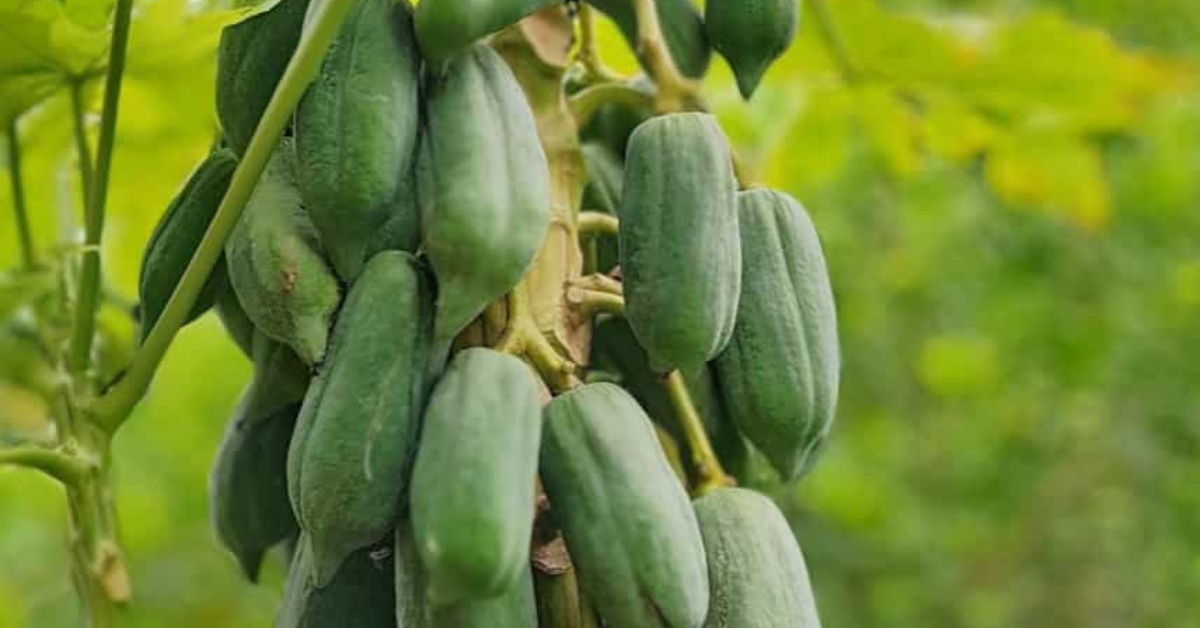 It is best to go for a hybrid or dwarf variety of papaya that is compact and suitable for small spaces; Picture source: Agri Farming
It is best to go for a hybrid or dwarf variety of papaya that is compact and suitable for small spaces; Picture source: Agri Farming
If you are collecting seeds from a ripe papaya, make sure the fruit is organic and untreated, as seeds from chemically-treated papayas may not germinate or could produce inferior plants.
2. Prepare your seeds
To begin with, extract the seeds from a ripe papaya and remove the gelatinous coating that surrounds each one. This coating inhibits germination and must be cleaned thoroughly. You can do this by rubbing the seeds in a sieve under running water.
Once clean, allow the seeds to dry for a couple of days in a shaded and well-ventilated area. Next, soak the dried seeds in lukewarm water for 24 hours; this softens the seed coat and speeds up the germination process. If you have purchased commercial seeds, you may skip drying but still benefit from soaking them overnight.
3. Pick a sunny, well-drained spot
Papaya trees are sun-loving plants that require a minimum of six to eight hours of direct sunlight each day. Choose a location that is warm, open, and receives plenty of sunlight throughout the day. While papaya loves the rain, the roots are sensitive to standing water, so good drainage is essential.
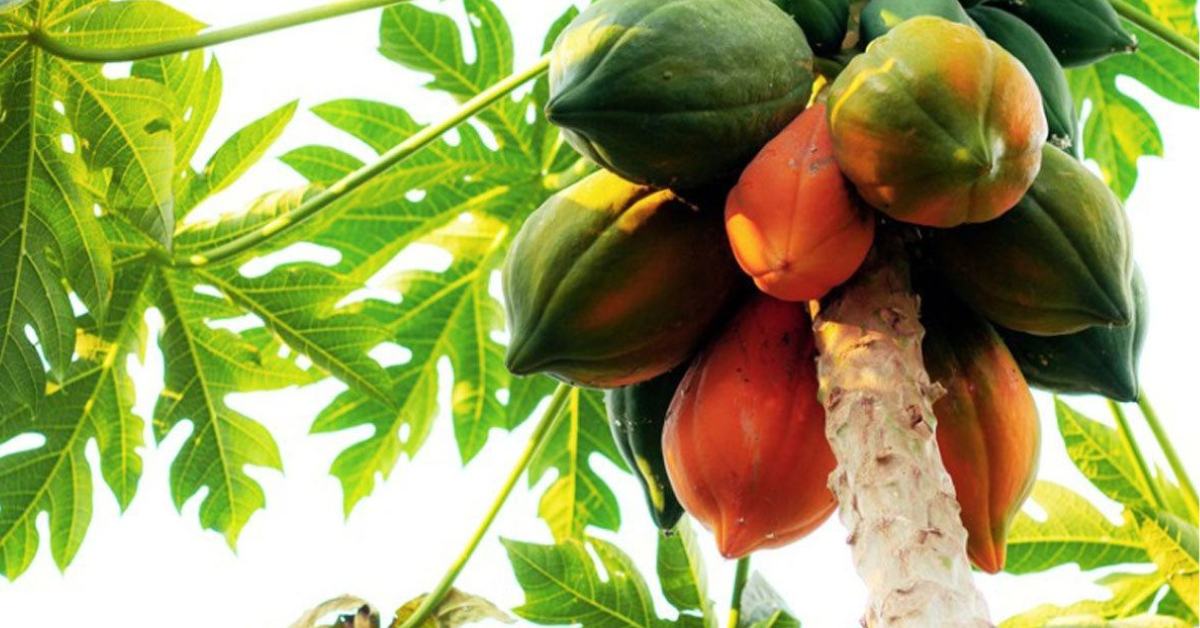 Papaya trees need a minimum of six to eight hours of direct sunlight every day; Picture source: Gardening Know How
Papaya trees need a minimum of six to eight hours of direct sunlight every day; Picture source: Gardening Know How
In a garden, pick a slightly elevated spot or use raised beds. For terraces or balconies, place large containers near a south-facing wall or railing where the plant can get full exposure. Make sure the area is protected from strong winds, as papaya has a relatively shallow root system and a soft trunk, making it vulnerable to being blown over.
4. Create the ideal potting mix
Papaya grows in light, loamy, and well-draining soil that is rich in organic matter. Heavy clay soils must be avoided as they retain too much moisture, leading to root rot. To prepare a good soil mix, combine 40% garden soil with 30% well-rotted compost or cow dung manure, 20% coarse sand or cocopeat for drainage, and 10% organic fertiliser or neem cake powder to deter pests and enrich the soil.
If planting in pots, choose containers that are at least 18–20 inches wide and equally deep to allow sufficient space for root development.
5. Sow seeds carefully
Sow three to four seeds in each pit or pot, about one to two centimetres deep, and cover lightly with soil. Keep the soil consistently moist, but not soggy. Germination usually occurs within 10 to 21 days.
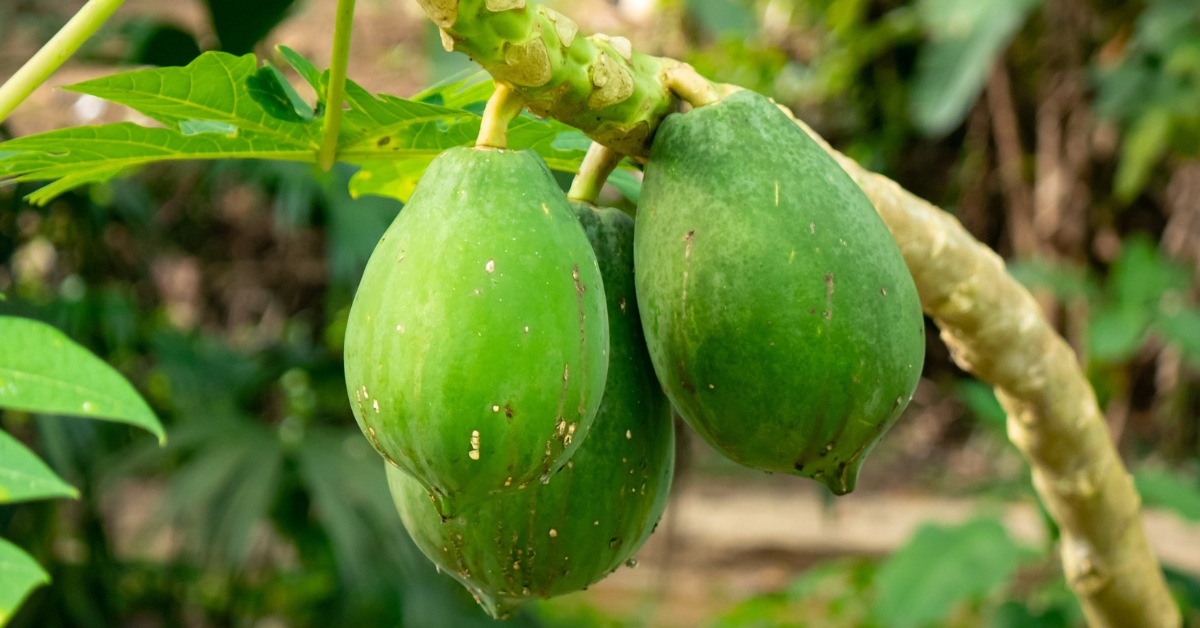 Papaya grows in light, loamy, and well-draining soil that is rich in organic matter; Picture source: Homes and Gardens
Papaya grows in light, loamy, and well-draining soil that is rich in organic matter; Picture source: Homes and Gardens
Once the seedlings reach four to six inches in height, thin them out by removing the weaker ones, leaving the healthiest and most upright plant in each spot. Papaya plants are dioecious, which means they may be male, female, or hermaphrodite.
Since only female and hermaphrodite plants bear fruit, it is advisable to retain at least two to three seedlings in the beginning, and later remove the males once the plant begins flowering.
6. Water just right and feed monthly
During the monsoon, natural rainfall should suffice, but make sure the area does not become waterlogged. In dry spells, water the plant regularly, guaranteeing the top inch of soil stays slightly moist.
Papaya is a heavy feeder and benefits from monthly applications of compost or organic fertiliser. Supplement with a high-potassium fertiliser during the flowering and fruiting stages to encourage fruit development. Homemade solutions like banana peel compost, wood ash, or diluted liquid seaweed fertiliser are excellent natural options.
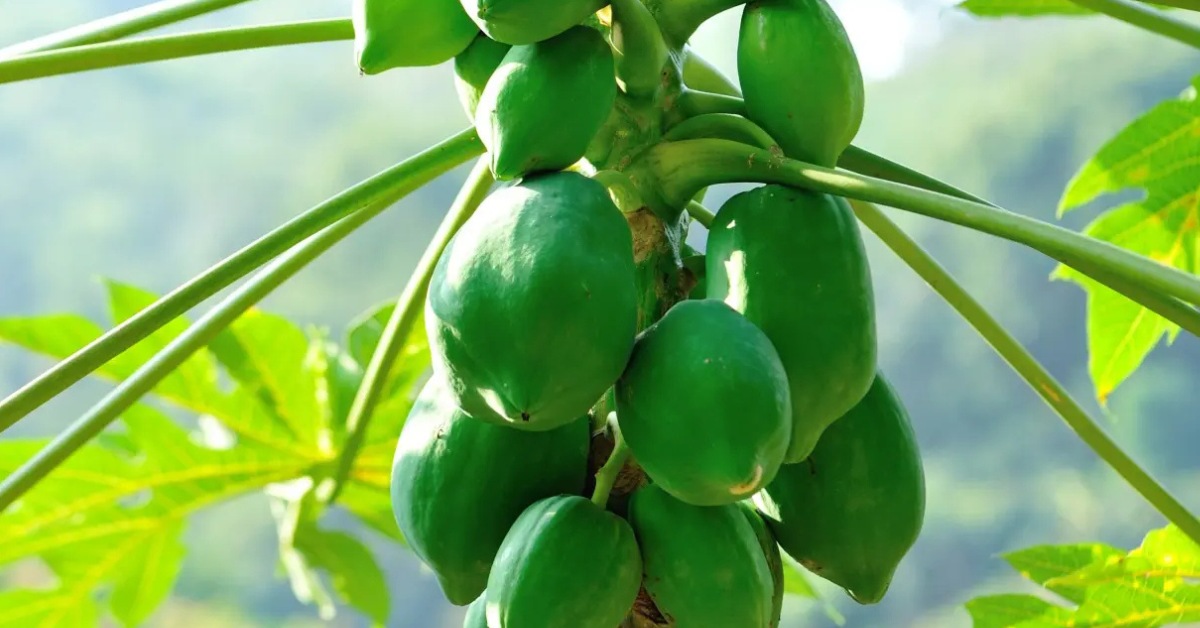 In dry spells, water the plant regularly, guaranteeing the top inch of soil stays slightly moist; Picture source: PlantIn
In dry spells, water the plant regularly, guaranteeing the top inch of soil stays slightly moist; Picture source: PlantIn
7. Control pests naturally
As the plant grows taller, it may become top-heavy, especially during windy or stormy weather. Use a bamboo or wooden stake to support the trunk. Papayas are relatively low-maintenance, but pests such as aphids, whiteflies, and mealybugs may appear, especially in humid conditions.
Use a neem oil spray every seven to 10 days to keep insects at bay. Check for good air circulation around the plant by removing dead leaves and not crowding plants too closely together.
8. Know when to harvest
Papaya plants typically begin to flower within four to six months. Male flowers are longer and grow on stalks, while female flowers are rounder and closer to the stem. Hermaphrodite flowers contain both reproductive parts and are self-pollinating.
If you are growing multiple plants and pollination seems poor, gently hand-pollinate using a soft brush. Once fruits form, they mature over the next five to six months. Harvest when the skin starts turning yellow and the fruit softens slightly under pressure.
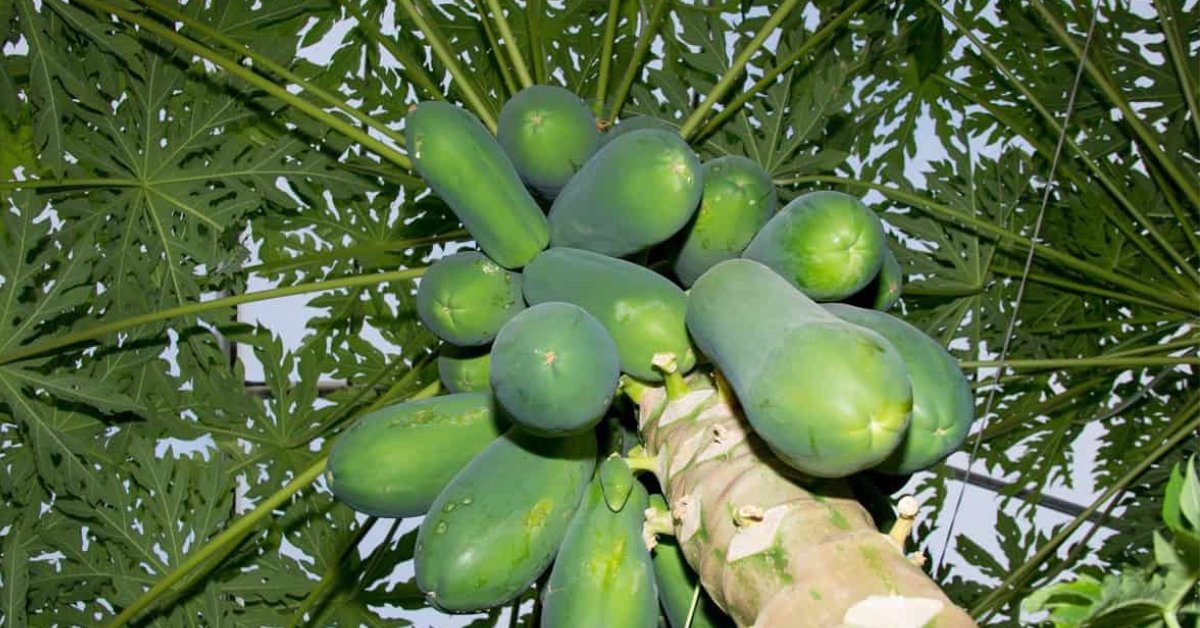 Papaya plants typically begin to flower within four to six months; Picture source: Agri Farming
Papaya plants typically begin to flower within four to six months; Picture source: Agri Farming
Growing papaya at home during the monsoon is not only easy but also rewarding. With a bit of attention in the early stages and the right growing conditions, you can enjoy delicious, chemical-free papayas from your own garden.
News